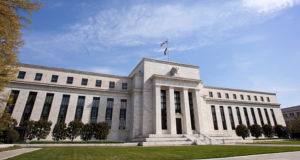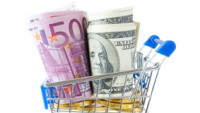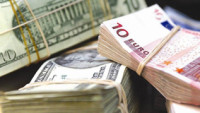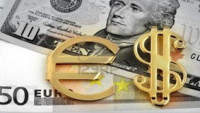 European stocks underwent a rather mixed end to the quarter yesterday, but still managed to post their best quarter in five years, though it does need to be set in the context of coming off the worst Q1 since the financial crisis.
European stocks underwent a rather mixed end to the quarter yesterday, but still managed to post their best quarter in five years, though it does need to be set in the context of coming off the worst Q1 since the financial crisis.
Investors appear to be caught in two minds for the moment, with optimism about a continued improvement in economic data on the one hand, being offset by some caution on the other over the prospect that any second wave could push out any recovery well into next year. The continued rise in US coronavirus cases appears to be being pushed to one side for now, despite dark warnings from Anthony Fauci, the director of the National Institute of Allergy and Infectious Diseases, that cases could soar to 100,000 a day. This could change if death rates start to follow suit, which in turn could see current sentiment take a turn for the worst.
This perhaps helps explain why gold prices have continued to edge higher, hitting their highest levels since October 2012, while at the same time stock markets remain fairly well supported, as investors hedge their bets.
US markets also finished the quarter very much on the up, drawing a line under the best quarterly performance since the late 1990’s, while gold prices also saw their best quarter since 2016.
Despite the ungarnished optimism about the prospect of a v-shaped recovery, there still remains a significant amount of scepticism that it will be as simple as that, and while central bank stimulus, and fiscal stimulus will get you so far, at some point the fundamentals will eventually have to win out.
For now, the economic data has continued to improve, with Asia markets getting the month off to a fairly subdued start, with the Nikkei struggling a little due to a disappointing Q2 Tankan survey, from the Bank of Japan. Manufacturing on the other hand saw a pickup in June with the latest PMI number coming in at 40.1, up from 37.8. This in turn looks set to see European open markets edge higher as we start a new month and a new quarter.
The latest manufacturing PMI’s look set to build on the improvements seen in May, starting with this morning’s latest Chinese Caixin manufacturing numbers for June, which came in at a much better than expected 51.2, following on from some decent official data earlier this week.
This morning we’ll also get a further insight into the progress of the economic re-openings in Europe. Last week’s flash PMIs for France, Germany and the UK showed promise with improvements to 52.6, 44.6 and 50.1 respectively. These numbers are expected to remain unchanged from the flash readings, though with the further relaxation of the lockdown in the UK midway through June, the UK numbers could be susceptible to a further uptick.
The numbers for Spain and Italy are also expected to improve to 45.1 and 47.8 respectively, however we should also be mindful that while the manufacturing sector has proved more resilient than the services sector, it may also take longer to get fully restarted.
This is because a return to normal will require a recovery in the services sector due to backlogs of existing products, which haven’t yet been sold. These will take the form of unsold cars and other manufactured products, which will need to be worked off before manufacturing can restart in earnest.
We will also get to see the publication of the latest Federal Reserve minutes from the June meeting. These were every bit as dovish as expected, with Fed chair Jay Powell expressing particular concern about inequality, which he said could continue for the next four decades, and the fear that millions of people could be out of work for some time.
Against such a dark outlook he went on to say that it wasn’t the Fed’s role to care about asset prices and whether they were too high, saying the central bank’s main role was to support the US economy and keep the financial system afloat.
Despite some encouraging economic data since the 10 June meeting, Mr Powell has remained insistent that it’s too early to draw too many conclusions this early in the crisis, insisting that the strength of any recovery will largely depend on keeping virus cases in check, though he did seem slightly more optimistic in his comments this week than he was at the June press conference.
Today’s minutes should offer insight into the discussions over various measures taken by the FOMC, including their concerns about a second wave and the health of the US banking system. The recent stress tests appear to show that the Fed remains concerned about the health of the banking system, by capping dividends to prevent banks from depleting their capital, in the face of the rising prospect of consumer and business defaults. The minutes could also offer an insight into any discussion over yield curve control, as well as the recent surprise intervention in the corporate bond market, which many considered unnecessary.
EURUSD – continues to hold above the support at the 1.1160/70 area. Rebounds continue to look shallow with a break below 1.1160 potentially opening up a return to the 1.1020 area and the 50, and 200-day MA’s. Above the 1.1350 area retargets the highs from June at 1.1425.
GBPUSD – support at the 1.2215 level has held so far, however break below could well target a move back to the May lows at 1.2075. We need to see recovery back above the 1.2450 level to stabilise and open up the 1.2540 level and last week’s high.
EURGBP – a failure at the 0.9180 level and a reversal day has seen the euro slip back, with support now at the 0.9020 area. While above the 0.9000 area the bias remains for a move back to the 0.9240 area. We also have trend line support from the lows this year which comes in at the 0.8950 area.
USDJPY – a move through the 108.00 area has the potential to open a move towards the 108.70 area. While below 108.00 the risk is for a move back towards the 107.20 area.
_____________
Other Forex Forecasts












